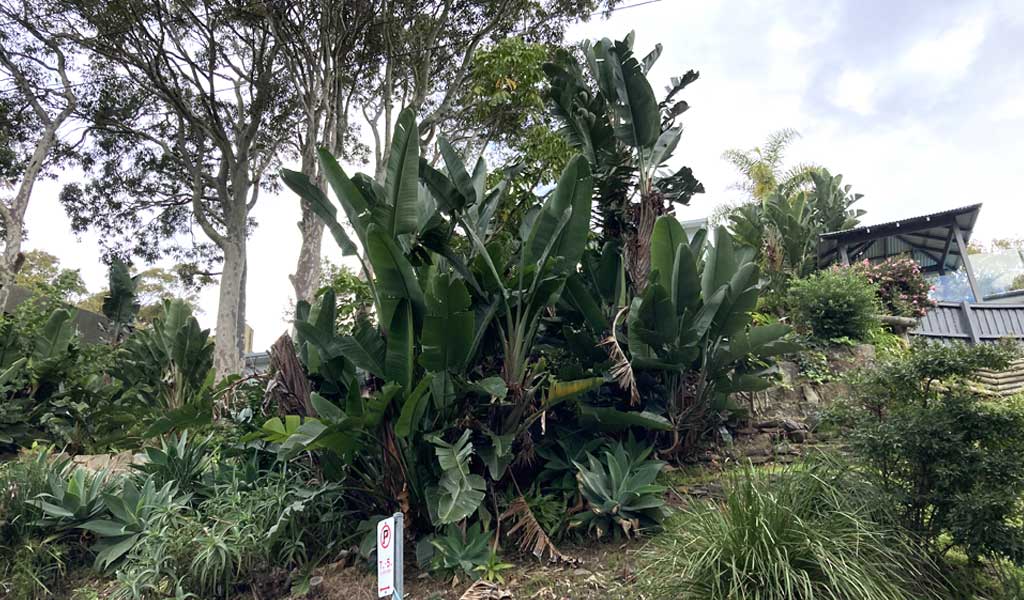We all learn from experience. I’ve discovered over time that the best way to choose plants for the garden is to think outside the garden bed and into the future; not just how big and high the plant will grow, but also whether it might impact the surroundings, the neighbours and also could it harm the environment?
By Jane, Pittwater resident, bush care volunteer and Canopy Keeper
Fifteen years ago I bought a sweet little potted palm and planted it in my newly created outdoor shower area. It grew fast, forming three tall trunks and a natural tropical palm canopy over my shower. Perfect! But over time, my tiny corner of paradise crumbled, literally, as the tree morphed into a monstrous size with multiple trunks that gradually tore up the crazy paving. Not long after we sold the house the neighbour’s 2 metre high stucco brick wall split clean in two – the guilt lives on.
Tree Strelizia, Strelizia nicolai, also known as Giant Bird of Paradise is a long-lived palm from South Africa and I’ve discovered how detrimental it can be to our local bushland environment. They spread quickly, assisted by cockatoos dropping the seed. These palms grow up to 8 metres tall and expand massively in width, particularly after pruning. Once established they swamp out other plants, are impossible to maintain and the devil to remove. In our case, in Clareville, we’ve spent a decade taking out the previous owner’s giant strelizia mistakes, using ladders, machetes, chain saws, ropes, winches, skip bins and a ready supply of backpackers, giving some of them the truly Aussie experience of extreme gardening and snake fright.
In the end it was worth it. Our bushland garden is regenerating nicely and attracting smaller birds to vie with the cockatoos, including topknot pigeons, scaly-breasted lorikeets, rosellas and yet to be identified little brown wrens.



